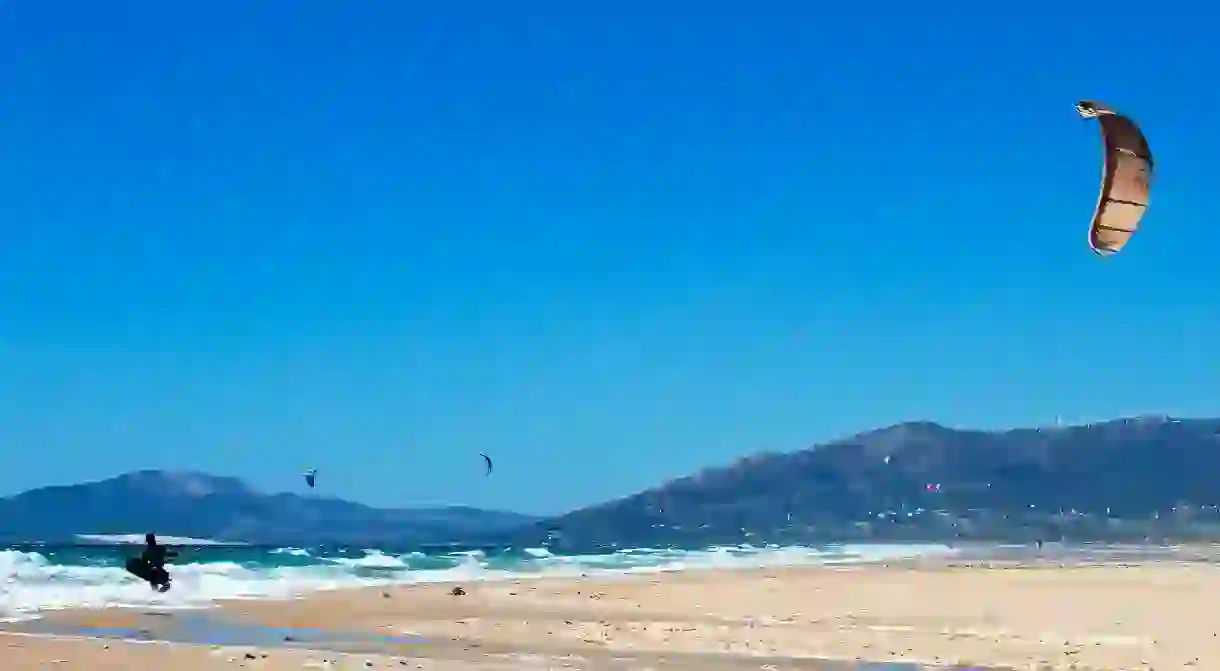How to Spend 36 Hours in Tarifa, Spain

Occupying the southernmost tip of Contintental Europe, Tarifa is one of Spain’s best-kept secrets. Read our guide to getting the most out of 36 hours in this trendy Andalusian town, from catching world-class surf to exploring its beautiful old quarter.
DAY 1
Morning
Go whale and dolphin watching
Kick start your 36 hours in Tarifa with a boat trip into the Strait of Gibraltar to spot local marine wildlife. This thin strip of water (it’s just 9 miles (14.5 km) wide at its narrowest) separates the southernmost point of Continental Europe from the north African coast, and is home to bottlenose, striped and common dolphins as well as pilot, long-finned, pilot and killer whales. Most can be seen all year round, but the killer whales are particularly visible from mid-July to mid-September, when they hunt tuna crossing from the Mediterranean into the Atlantic.
There is no shortage of companies offering sighting trips out into the Strait; but hard to beat for both price and the knowledgeability of their staff are Whale Watch Tarifa and Turmares (prices start at about €30 (USD$34.75) per adult during low season and €50 (USD$57.90) per adult in high season).

Lunch in the old town
After spending most of the morning at sea, head to Tarifa’s old town for a pre-lunch stroll. Extending northwards from the Guzman castle (see below), it’s a beautiful quarter of cobbled lanes and whitewashed houses that feels as Moroccan as it does Andalusian. It’s packed with great options for lunch, such as locals’ favourite El Lola – a cosy tapas joint that serves Spanish classics alongside sushi-style dishes using Almadraba tuna. The old town is also the best place to be at night, with Cafe Central and Bar Almedina amongst the most popular hangouts.
Afternoon
Hit the beach
It would be a sin to visit Tarifa without spending a morning on one of its beaches – justifiably considered amongst the finest stretches of sand in Spain. Owing to the town’s consistently windy climate (it’s buffeted by the Poniente wind from the west and the Levante from the east), these playas have become some of Europe’s key surfing destinations, especially for kitesurfers.

The most beautiful and unspoilt is Playa de Los Lances: located just north of the town, it stretches for 10 km (6.2 miles), backing onto the beautiful cork oak forests of the Alcornocales natural park. During high summer, surfers aren’t allowed here, making it the perfect spot to work on your tan and bathe in the deep blue waters.
A little further north is the Playa de Valdevaqueros. A favourite among kitesurfers, it’s also where you’ll find some of the area’s most spectacular dune formations. If you’re looking to catch some waves, head to the main beachside drag in Tarifa, Calle Batalla del Saldo, where you’ll find surf schools and rental stores galore.

DAY 2
Morning
Visit the castle
Start your second morning in Tarifa with a visit to its key architectural attraction. The Castillo de Guzmán El Bueno (‘Guzman The Righteous’) was constructed in the 10th century to protect the town’s Moorish inhabitants from Christian invaders, which it successfully did until 1292, when Tarifa was captured by King Sancho IV El Bravo (‘The Brave’). The castle is named after Alfonso Perez de Guzmán, who sacrificed his son in the process of defending the town from a Moorish siege in 1294.
Go trekking
With the best part of a day remaining, you’ve time to explore the stunning countryside that surrounds Tarifa. The best way to do this is to trek in either one (or both, if you’re feeling energetic) of the two natural parks that flank the town – the Parque Natural de Alcornocales and the Parque Natural de Estrecho.

The Alcornocales natural park is home to the largest concentration of cork oaks on the Iberian Peninsula, through which some its most beautiful hiking trails weave. Also found here are breathtaking canutos – precipitous ravines caused by millennia of water and wind erosion – and wildlife that includes kestrels, bats, vultures and wild horses.
If you’re after a coastal track, meanwhile, head to the Estrecho park, which extends along the most southerly coastline in Continental Europe. Along the Colada de la Costa, the views of Morocco’s coastline and the Atlas mountains are spectacular. Watching the sunset anywhere along this track will provide the perfect conclusion to your 36 hours in Tarifa.














